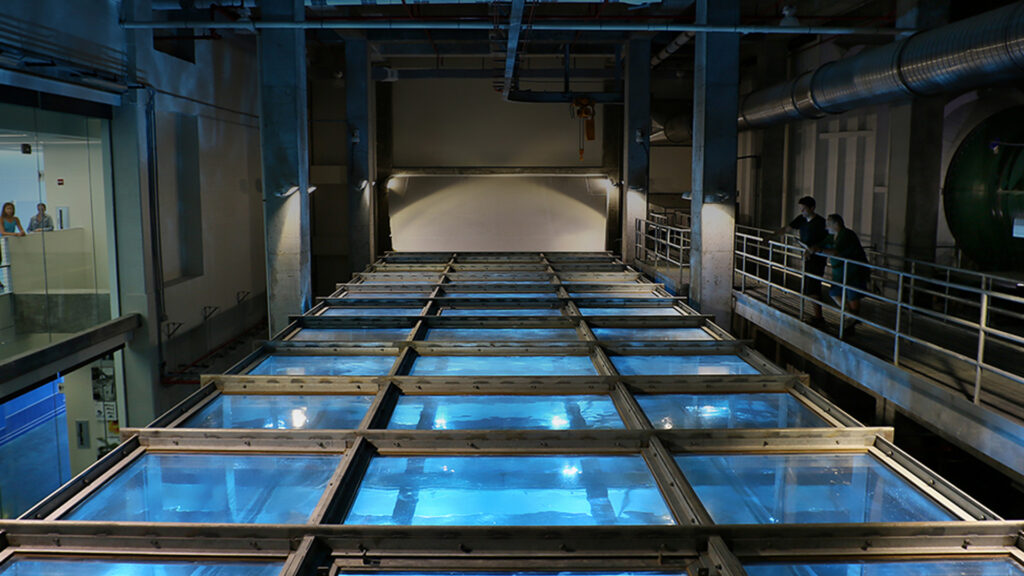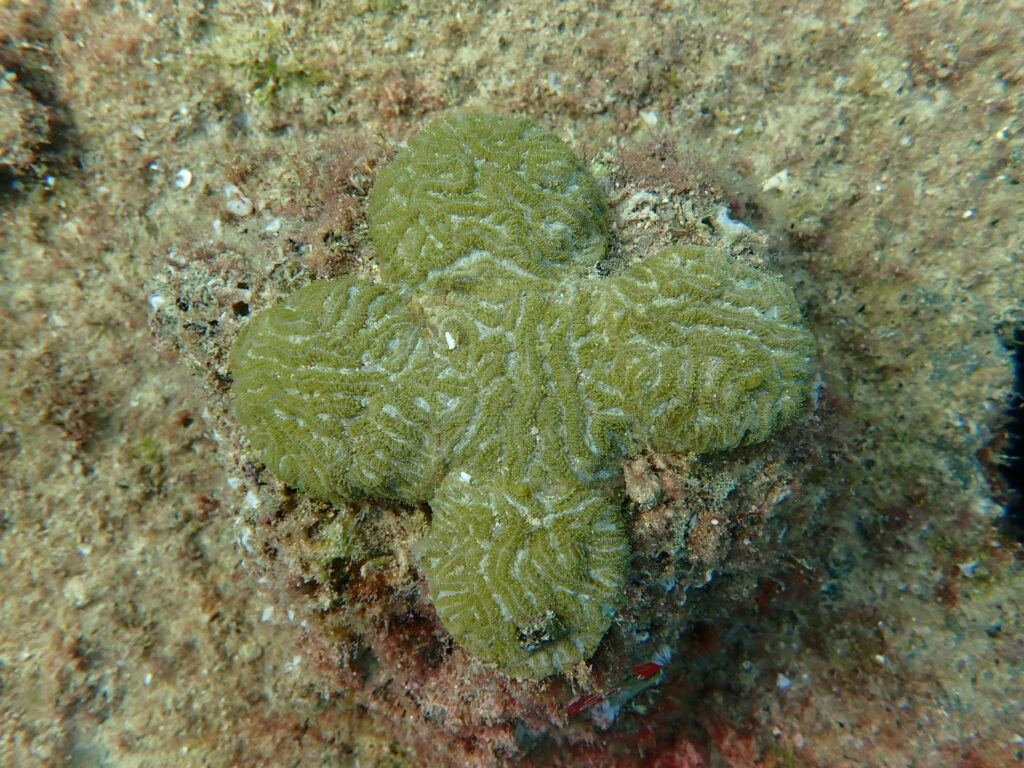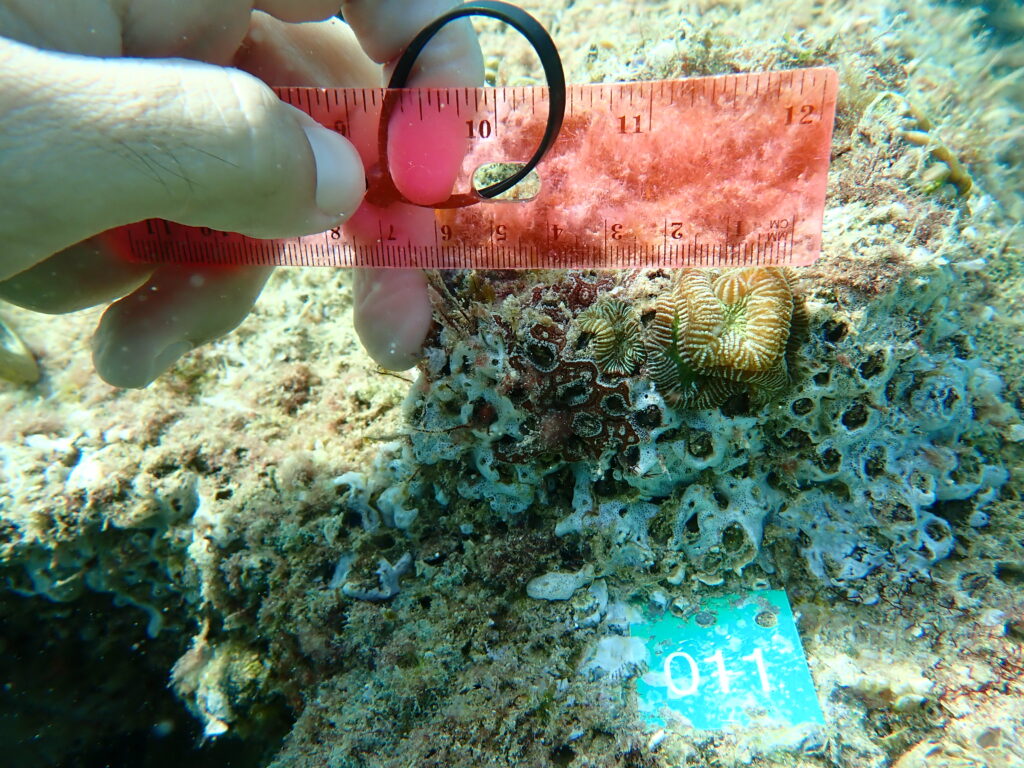This story was originally published by The Revelator, an initiative of the Center for Biological Diversity.
Coral reefs support vibrant marine ecosystems, stimulate tourism and fishing industries, and protect shorelines from tropical storms and erosion. But reefs around the globe have been hit hard by pollution, overfishing and climate change, which is causing increasingly frequent and severe coral bleaching. Scientists predict severe bleaching on 99% of the world’s reefs within this century unless we reduce greenhouse gas emissions. Saving coral reefs requires major systemic changes — dramatic cuts in energy consumption, switching to renewable energy, managing overfishing and pollution, and restoring target reefs.
Restoration efforts have now become a priority for many scientists. This series looks at some of those efforts.
The University of Miami’s Rosenstiel School of Marine, Atmospheric, and Earth Science sits on the shore of Florida’s Virginia Key. Most of its buildings have views of the water. One of them even houses its own ocean.
This boxy wind-wave tank, part of the Alfred C. Glassell, Jr. SUSTAIN Laboratory, is 60 feet long, 7 feet tall and 23 feet wide. A jet engine creates winds up to 170 mph and mechanical paddles make waves; putting the two together can simulate a Category 5 hurricane. The tank is clear on all sides, high enough to walk under and strong enough for scientists to sit on top so they can monitor the action inside.

A multidisciplinary team at the university is using this tank to study how artificial reef structures stand up to wind and waves and how well live corals planted on those structures survive and grow. This work could lead to a unique combination of “grey” or human-built infrastructure, such as concrete seawalls, and “green” or natural systems like coral organisms — resulting in systems that provide both shoreline protection and coral reef habitat. A collaboration between the university and the city of Miami Beach, the project is called Engineering Coastal Resilience Through Hybrid Reef Restoration, or ECoREEF.
Florida is the only state in the continental United States with a shallow coral reef near its coast, extending some 350 miles from the Dry Tortugas at the tip of the Keys in the Gulf of Mexico to north of Palm Beach. Studies show that shallow coral reefs can buffer up to 97% of the energy from waves, reducing flooding and helping to prevent loss of life, property damage and erosion from storms. But nearly 90% of corals on this reef have died due to climate change, hurricanes, disease and human development. Add in South Florida, with its low-lying typography and its location within the tropical storm belt, the result is a heavily populated coastline extremely vulnerable to the effects of climate change.
ECoREEF joins other projects, some decades-long, working to restore Florida coral reefs, which provide habitat for hundreds of marine species — including green sea turtles, parrotfish and stingrays — while supporting the state’s tourism industry and protecting its shorelines and structures from wave energy. The reef-restoration efforts include studying the idea of moving hardier corals into degraded areas, outplanting hand-raised coral fragments onto existing reefs, coaxing corals to reproduce sexually in laboratories and boosting natural sexual reproduction of the organisms in the wild.
“The idea behind ECoREEf is installation of structures that can host corals but also provide wave energy dissipation,” says Landolf Rhode-Barbarigos, an associate professor in the College of Engineering.
After testing designs in the tank, in March the team deployed two types of structures in 14 feet of water about 750 feet off the shore at Miami Beach. One design is a hollow trapezoid structure with limestone boulders on its outer surface to mimic the texture of coral reefs and attract marine life. The other is a configuration of hollow, hexagonal units perforated to let water flow through, called Sustainable Estuarine and Marine Revetments, or Seahives. Both are made of concrete.
It’s less expensive to test and alter a model in the tank than an actual structure out in the ocean, says Brian Haus, chair of the Department of Ocean Sciences at the Rosenstiel School. Post-testing, models can be scaled up.
“The tank testing gives us a model that tells us this structure dissipates this much wave energy,” says Rhode-Barbarigos. “Then we use those findings combined with mathematical models to design structures that can withstand the actual waves.”
There’s increasing recognition that green infrastructure is an effective and cost-efficient alternative to gray infrastructure. But once green systems are lost or degraded, it can take a long time to restore them. The artificial infrastructure can help speed up that restoration.
The physical structures are well-developed at this point, but adding living coral makes the system much more complex — one reason for the multi-disciplinary nature of the project. “We’ve blurred the lines between ecology and engineering to think of not only optimizing the structures but what types of corals we use,” Rhode-Barbarigos says.

He points out that data from the project can show the value of the combination. “It makes a different type of argument for coral restoration. If we can combine coral restoration and shoreline protection, we have a stronger argument.”
So far, the work clearly supports the argument of combining the two for shoreline protection. One study showed that coral structures — the calcium-based skeletons these organisms create — can significantly enhance the wave-reducing capability of an artificial reef, depending on sea conditions and characteristics of the structure. A trapezoidal artificial coral reef model was found to reduce up to 98% of the wave energy, with coral contributing an estimated 56% of the total. Additional testing found that adding skeletons of staghorn corals (Acropora cervicornis) mitigated up to an additional 10% of wave height and 14% of wave energy on submerged artificial reef compared to those without corals.
After the structures were placed in the water, marine scientists from the Rosenstiel School added live corals, including great star, mustard hill, knobby brain and symmetrical brain corals. These species all are stony corals, which can create massive reefs over time.
“On July 19, we outplanted about 500 corals, fragments we took from parent colonies and grew out either here at UM or at our offshore nurseries,” says Emily Esplandiu, a research associate in the school’s Coral Reef Restoration Lab. While many offshore coral nurseries hang staghorn coral fragments from PVC trees using monofilament, this lab uses an adhesive to affix corals to a plug that’s screwed into flat trays. The trays are easier to transport from the nursery to the testbed structure, she adds. Engineers are now incorporating the plug screws into the design of the artificial reef structures, making it easier to attach corals.
The team planned to outplant another 500 corals until extremely high temperatures hit Florida waters in late summer. The scientists instead found themselves bringing corals from their offshore nurseries into land-based facilities. “At temperatures of about 30.5 degrees Celsius (87 degrees Fahrenheit), we can’t outplant or move corals offshore,” Esplandiu says. The plan is to finish the planting by the end of this year, once temperatures fall below that threshold for at least a week.
Meanwhile, the scientists monitored the corals already on the structures, documenting about 80% survivorship. However, as temperatures continued to rise, on Aug. 17 the monitoring teams observed some paling (a precursor to bleaching), and on Sept. 8, they saw bleaching.
But there was some good news: The scientists observed differences in the amount of bleaching among species and genotypes within species. They plan to take a closer look to identify those least affected and use those hardier genotypes for future fragmenting and outplanting. For example, the original outplanting included four or more genotypes of star coral, Esplandiu says, and one genotype all bleached while another all remained healthy.
Haus notes that the ultimate goal is to create larger infrastructure to provide more protection. “Beach renourishment and dune reconstruction are no longer enough with sea-level rise,” he says. This effort could put corals in new areas as well as those that historically had reefs — good news for coastal residents and marine life.

“People are realizing it’s a crisis, all of it — coral loss, climate change, sea level rise,” says Haus. “The goal is to develop solutions that are ecosystem friendly and indeed help the ecosystem. Of course, it won’t be enough if we don’t change. We need to stop the source of the problem because emissions are just going to get worse.”
For the Coral Reef Restoration Lab, the next step is to grow out thousands more coral fragments for planting on additional structures. Working with engineers to design structures that work better for the corals has been exciting, Esplandiu says. “We learned that corals do best with high water flow, because that flow brings nutrients. We know putting a coral on the top versus the side of a structure is different. We can work together to find literally the specific spot on a structure that is best to put corals.”
“Up until now, the only outplanting we had done was on the natural reef, which is mostly degraded in Florida,” Esplandiu says. “We see a lot of restoration sites crashing after three to five years because they’re facing the same stressors the corals were to begin with. The reef framework is the most important part of the reef, and we’ve lost so many corals that they’re no longer able to create that framework.”
Coral restoration efforts are something of a finger in the dike, scientists acknowledge, and ultimately won’t succeed without continued efforts to change the things that are causing coral loss in the first place, such as greenhouse gas emissions, overfishing and pollution.
But the test structures offer a way to replace some of the natural reefs that have been lost, and they provide an alternative to putting corals back onto degraded reefs. The team has already documented a large fish community around the test structures.
The combination of artificial reefs and stress-tolerant corals could contribute to restoring both the coastal protection and marine habitat provided by healthy natural reefs. In other words, work in the university’s indoor ocean is helping to heal the real ocean just outside its windows.
Melissa Gaskill is a freelance science writer based in Austin whose work has appeared in Scientific American, Mental Floss, Newsweek, Alert Diver and many other publications. She is the co-author of “A Worldwide Travel Guide to Sea Turtles” and author of “Pandas to Penguins: Ethical Encounters with Animals at Risk.”
Sign up for The Invading Sea newsletter by visiting here. If you are interested in submitting an opinion piece to The Invading Sea, email Editor Nathan Crabbe at ncrabbe@fau.edu.



